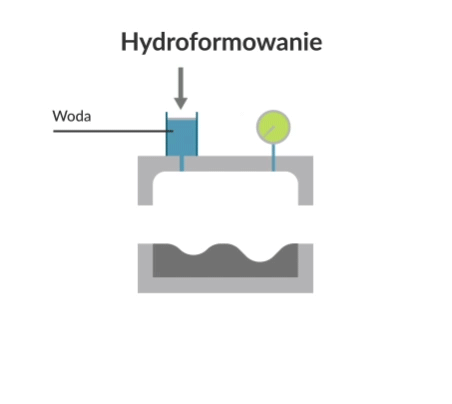Hydroforming is a way of forming metals into lightweight, structurally stiff and strong pieces. One of the largest applications of hydroforming is the automotive industry, which makes use of the complex shapes made possible by hydroforming to produce stronger, lighter, and more rigid unibody structures for vehicles. This technique is particularly popular with the high-end sports car industry and is also frequently employed in the forming of aluminium tubes for bicycle frames.

Hydroforming
Type of technology
Development phase
Level of innovation
Scale of production
mass
Technology readiness level TRL
Description of the technology
Purpose of use
manufacture of extrusions with complex shapes
Use in industry
automotive industry, manufacturing of hydraulic parts
Alternative technologies
- deep rolling process
Visualisation of action
Advantages
- fewer operations needed for specific part geometries
- no lower/upper punch or indentation required
- uniform deformation of the material
- less material springback
- reduced material wear
- higher strength materials
Disadvantages
- the cost of purchasing the equipment
- production time
Workpiece material types
- all groups of materials
- ferrous metals
- non-ferrous metals
- ferrous metal alloys
- non-ferrous metal alloys
Examples of products
- vehicle bodies
- aluminum bicycle frames
Implementation of the technology
Required resources
- high-pressure equipment for forming sheet metal in dies
Required competences
- training on operating presses
Environmental aspects
Expert evaluation
Development centers
- AGH University of Krakow
- Silesian University of Technology
Legal conditions
- none
